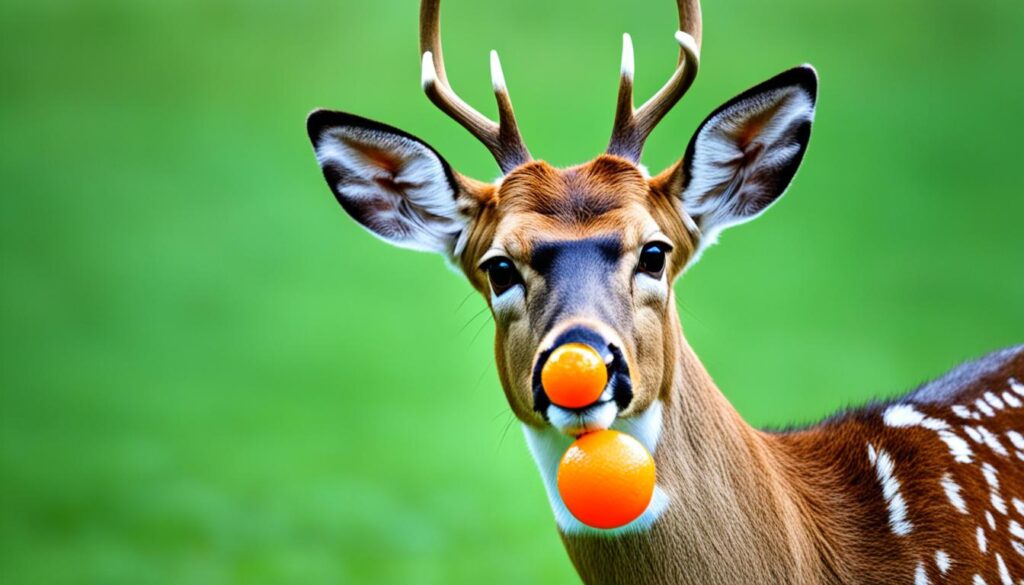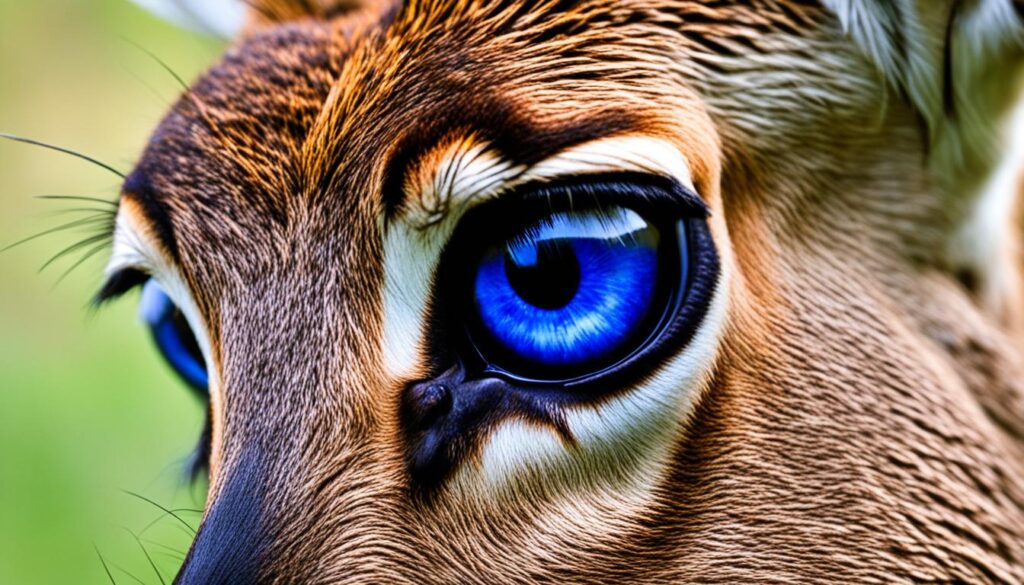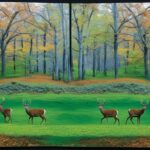When it comes to the world of deer and their perception of colors, the question often arises: Can deer see orange? Understanding how deer see and perceive color is essential for hunters, outdoor enthusiasts, and anyone interested in these majestic creatures. Let’s explore the research and uncover the truth behind the myth of deer’s ability to see orange.
Content Highlights
ToggleKey Takeaways:
- Deer can see colors, but their perception differs from humans.
- They have limited sensitivity to long-wavelength colors like red and orange.
- Deer eyes lack the ultraviolet light filter humans have, allowing them to see short-wavelength colors more vividly.
- Color is relatively minor compared to a deer’s acute sense of smell and hearing.
- Understanding deer vision can help hunters optimize their strategies for camouflage and detection.
How Deer Perceive Orange
Deer perceive orange differently than humans do. They view blues and short-wavelength colors about twenty times better than we do. In fact, blue jeans appear much more vivid to a deer than blaze orange clothing. This is because deer eyes lack the ultraviolet light filter that we have, allowing them to see short-wavelength colors more clearly. It’s important to note that clothing companies and laundry detergent manufacturers often add UV dyes and enhancers to their products, so clothing can appear to have an ultraviolet glow to deer, regardless of its color or pattern.
While deer do perceive orange, the significance of color in the grand scheme of things is relatively minor compared to their acute sense of smell and hearing, as well as their natural instinct to detect danger through movement in the woods.

Deer Vision and Perceptions
Deer have unique visual capabilities that enable them to effectively navigate their surroundings. Their eyes are strategically positioned to provide a wide field of view, covering approximately 300-310 degrees of visual coverage. Notably, deer possess binocular vision of around 65 degrees to the front, contributing to their ability to perceive depth and accurately judge distances.
When it comes to color perception, deer exhibit a higher sensitivity to colors in the blue spectrum. This advantage is particularly pronounced during dawn and dusk, when deer are most active. Research indicates that deer can distinguish light grays and tans more effectively than dark reds, browns, and greens.
While their visual acuity may not be as sharp as humans, deer excel at detecting motion. They possess the remarkable ability to process visual information approximately 2.5 times faster than humans in low light conditions, and twice as fast in daylight. Their superior night vision is accredited to their large, horizontally shaped pupils, which allow them to gather nine times more light than our round pupils. Additionally, deer have a more substantial concentration of rods in their retinas and possess a reflective layer called the tapetum lucidum, further enhancing their ability to see in low light conditions.

| Deer Vision Characteristics | Human Vision Comparison |
|---|---|
| Wide field of view (approximately 300-310 degrees) | Humans have a field of view of approximately 180 degrees |
| Higher sensitivity to blue spectrum | Humans have more balanced color sensitivity across the spectrum |
| Superior motion detection abilities | Humans rely more on detailed visual acuity |
| Enhanced night vision due to larger pupils and tapetum lucidum | Humans require artificial light sources for optimal night vision |
While deer have impressive visual capabilities, their perception of colors like orange is relatively less sensitive compared to humans. Understanding these differences is vital for hunters and outdoor enthusiasts aiming to optimize camouflage and minimize detection. However, it is worth noting that color plays a relatively minor role compared to factors such as scent, movement, and overall awareness in the wild.
Conclusion
Scientific research has confirmed that deer have the ability to see colors, including orange. However, their perception of long wavelength colors like orange is not as sensitive as that of humans. While color plays a minor role in terms of deer behavior and hunting camouflage, other factors such as scent and movement are more crucial.
Hunters and outdoor enthusiasts should understand how deer perceive colors and focus on minimizing movement and masking human scent to enhance their chances of remaining undetected. While orange might not have a significant impact on deer visibility, it is still important to consider all aspects of deer vision to ensure a successful and stealthy hunting experience.
By being aware of deer visual capabilities, outdoor enthusiasts can adjust their strategies and increase their chances of avoiding detection. Remember, while deer have unique visual abilities, their acute sense of smell and hearing remain the primary factors in their detection of danger in the wilderness.
- California Deer Hunting Guide: Seasons, Rules, Permits, and More - 26 June 2024
- Arkansas Deer Season 2024 [Schedules, Licenses, Bag Limits & More!] - 26 June 2024
- 2024 Arizona Deer Season New Dates & Rules! - 25 June 2024




